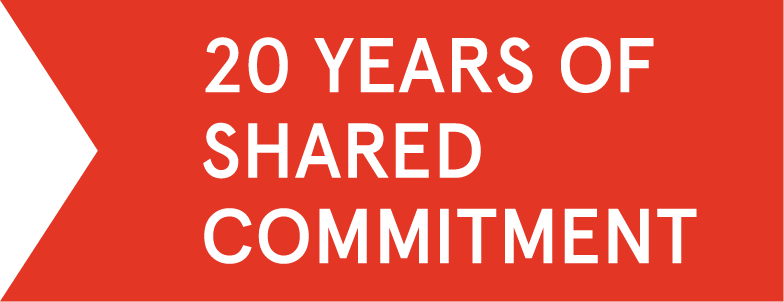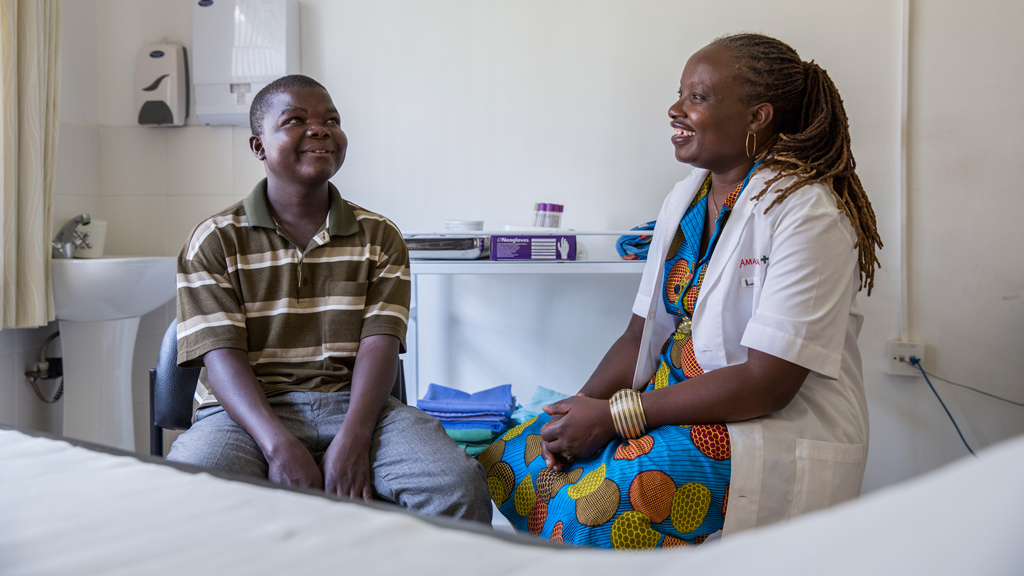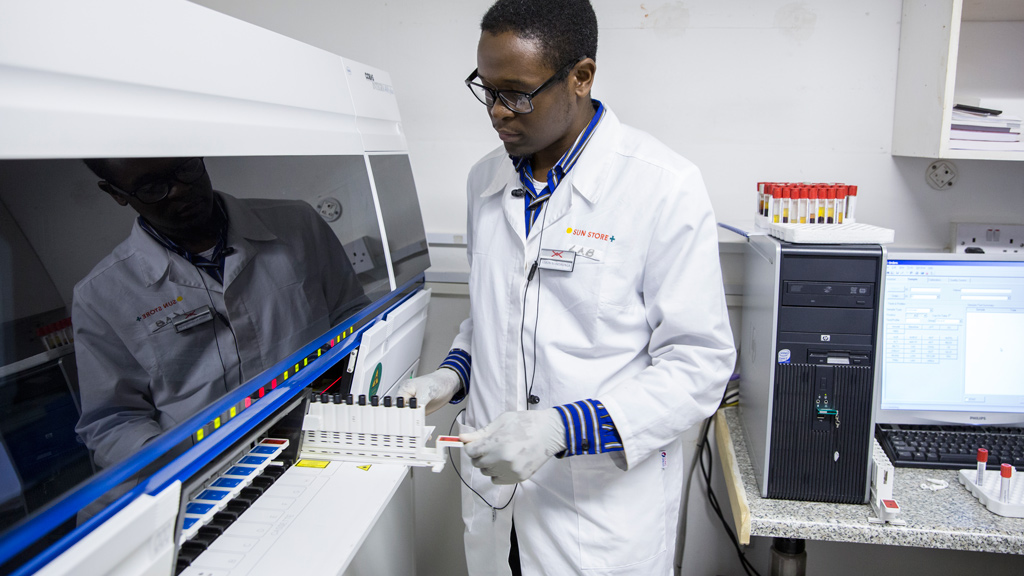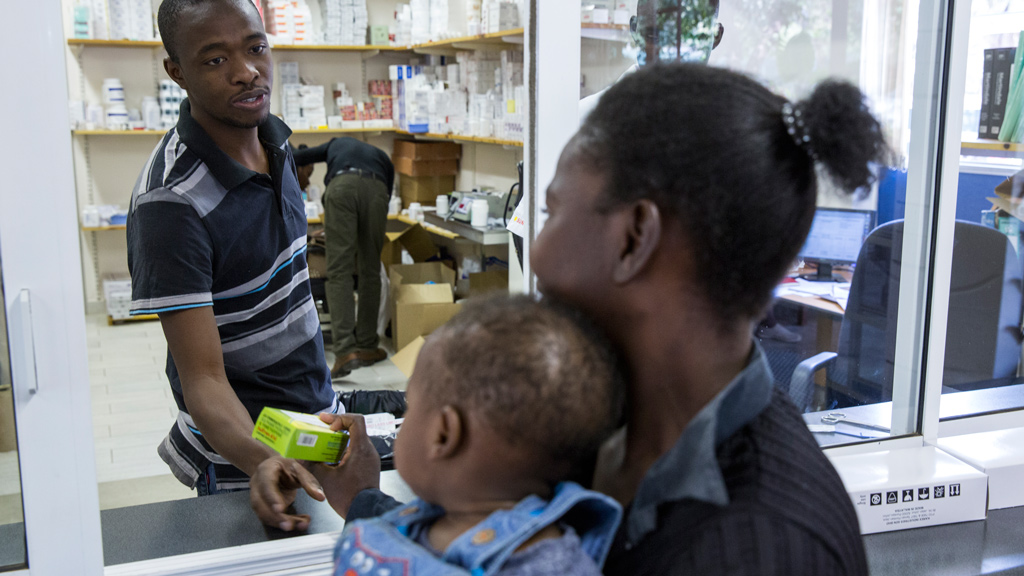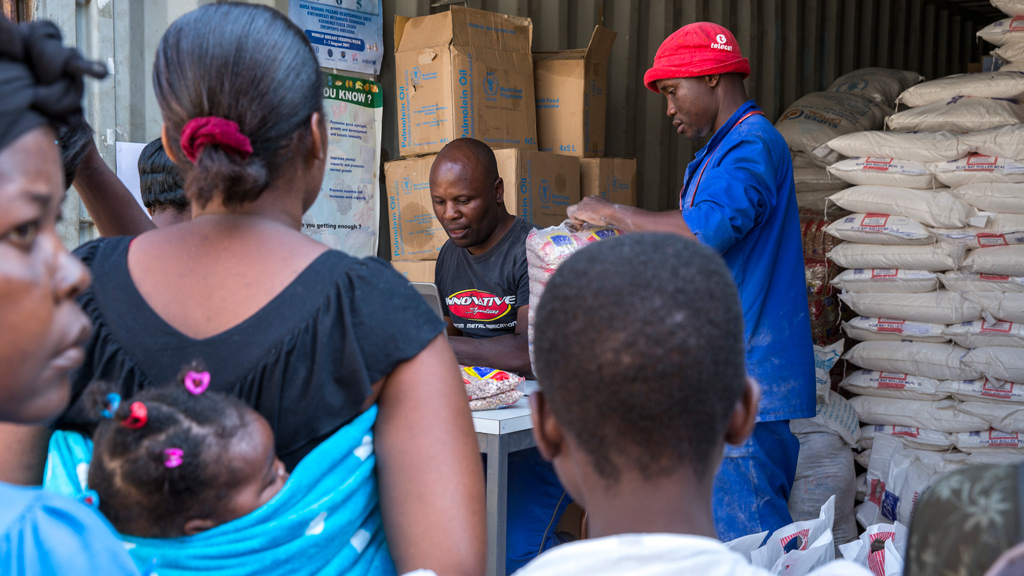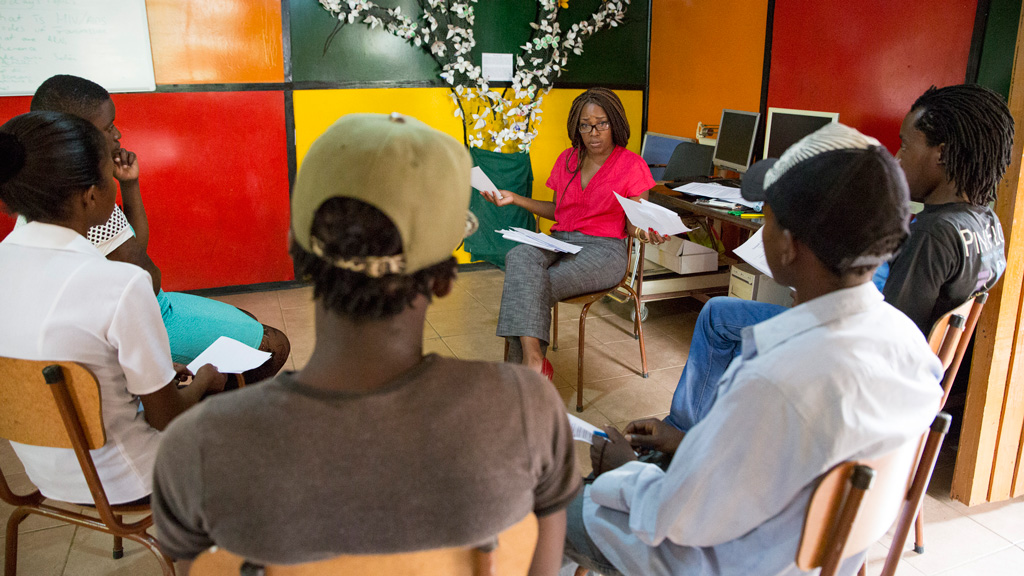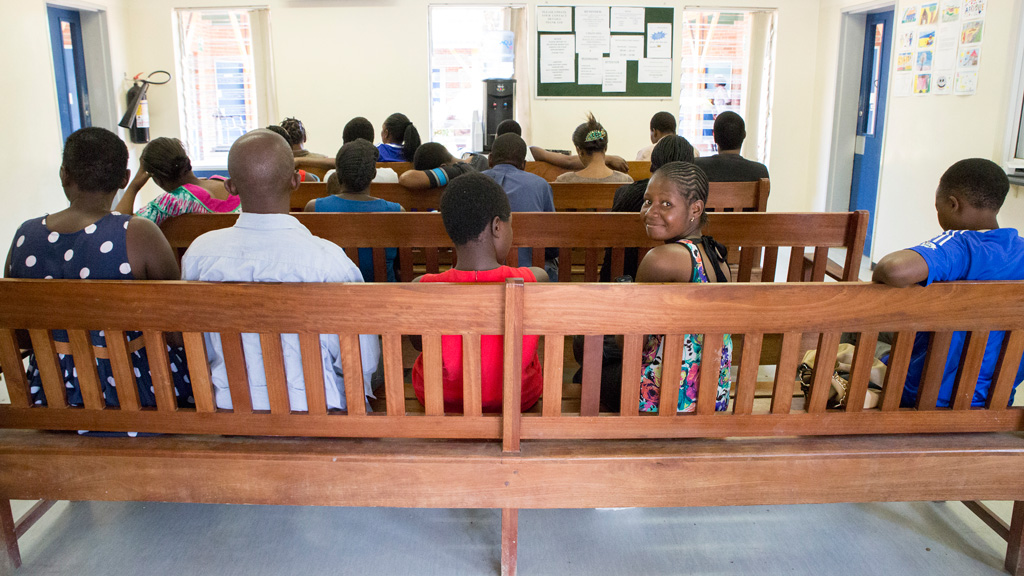HIV treatment
Fighting Aids and giving new hope
More than 1.3 million people are living with HIV in Zimbabwe, most of them with only inadequate access to healthcare. At Newlands Clinic in the Zimbabwean capital of Harare, the Ruedi Lüthy Foundation provides care for over 8 000 patients from the poorest backgrounds.
Of the more than 38 million people with HIV worldwide, more than 50% live in southern and eastern Africa. Zimbabwe is one of the poorest countries in the region, and 11 % of people aged 15-49 years are HIV positive. Half a million children have already been orphaned, and 20,000 people are still dying from Aids every year. The need is great. We focus on women, children and young people, and on people who perform a key role in their communities such as teachers and nurses.
Comprehensive treatment and support
The patients come to the clinic for an examination on a regular basis. Our specially trained nurses know their medical histories and their circumstances exactly. They carry out most of the work themselves, supported by doctors where needed. The life-long therapy is closely monitored to identify treatment failure at an early stage and take appropriate action.
Our patients live in the most difficult of circumstances: they have no work, suffer from hunger, and have lost family and relatives. Adhering strictly to the HIV treatment in such situations is a major challenge. We therefore provide supplementary assistance in the form of nutritional support, self-help groups for young people, and a vocational training programme, for example. After all, it is only when our patients see prospects for their future that they will be able to take control of their lives again.

Successful HIV treatment hinges on taking our patients' circumstances into account. That's why we supplement it with other services:

HIV Medication in Zimbabwe
Not all HIV medicines are available in Zimbabwe, and it is therefore all the more important that the patients adhere strictly to the treatment in order to prevent resistance developing. In 2023, 66 % of our patients were on the standard 1st line regimen, with 31 % on 2nd line and 3 % receiving 3rd line treatment.

